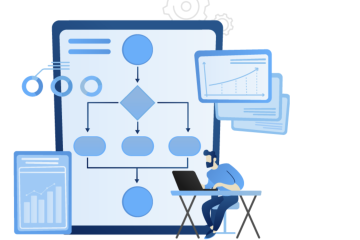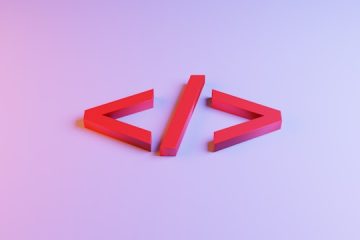September 27, 2023
User-Centric Design in a Fast-Paced World
In the rapidly evolving digital age, the significance of user experience (UX) and user interface (UI) design has reached unprecedented heights. In fact, one could argue that they stand as the twin pillars upon which the success of any digital product or application rests. The reason behind this is quite clear. Modern users, with their heightened expectations and discerning tastes, demand nothing less than seamless, intuitive, and visually stunning experiences.
In this era of instant gratification, the digital world is at our fingertips, and the competition is fierce. Achieving excellence in UX and UI design is not merely a competitive advantage—it’s an absolute necessity. Users today demand seamless, intuitive, and visually appealing experiences to stay engaged and loyal. Whether you’re developing a mobile app, a website, or any digital interface, one thing remains paramount: the user’s encounter with your creation. It should be nothing short of exceptional.
So, how does one embark on the journey to craft such exceptional user experiences? The answer lies in the establishment of a robust and adaptable UX/UI design process. In this blog, we will not only explore the vital components of UX/UI design but also shed light on the agile design process. It is a methodology that has revolutionized the way designers approach their craft.
The UX/UI Design Synergy
Before we explore the agile design process, let’s briefly clarify UX and UI design. UX (User Experience) design is all about ensuring users have a smooth, enjoyable journey when using a digital product. UI (User Interface) design, on the other hand, focuses on the visual elements that make the product visually appealing and user-friendly. Together, these two aspects create a seamless and pleasing user experience.
- UX Design
UX design focuses on understanding users’ needs, behaviors, and motivations to create a product that offers a meaningful and enjoyable experience. It involves research, usability testing, information architecture, and wireframing to ensure that the product aligns with user expectations.
- UI Design
UI design deals with the look and feel of the product. It focuses on the visual elements, including colors, typography, icons, and interactive elements. UI designers aim to make the product visually appealing and user-friendly.
The UX/UI design process encompasses several stages, starting from user research and ending with the final visual design and development. Traditionally, this process has been linear, with each stage completing before the next begins. However, the agile design process introduces a more flexible and iterative approach.
Agile Design Paradigm Shift
Agile, originally developed as a methodology for software development, has successfully transitioned into the realm of design, particularly within the domain of UX/UI design. The agile design process stands out due to its intentional divergence from the traditional, linear model. This departure gives rise to a design philosophy that highly values flexibility. Collaboration and an unwavering dedication to continuous improvement are at its core.
Key Principles of Agile Design
- Iterative Development
Agile design encourages a cyclical approach. Instead of completing one stage before moving to the next, designers revisit and refine their work continuously. This iterative process allows for quick adaptation to changing requirements.
- Collaboration
Agile promotes cross-functional collaboration between designers, developers, and stakeholders. Regular meetings and open communication channels ensure that everyone is aligned with project goals and user needs.
- User-Centered Design
The agile approach places the user at the center of the design process. User feedback is gathered early and often, guiding design decisions throughout the project.
- Flexibility
Agile design embraces change. As new insights emerge or project requirements evolve, designers can adjust their approach without disrupting the entire workflow.
Deliverable Focus
Agile divides the project into smaller, manageable deliverables. Each iteration results in a functional component that can be tested and refined independently.
Now, let’s break down the agile design process into its key stages:
1. Discovery and Research
The agile design process begins with thorough research and discovery. Designers collaborate with stakeholders to define project goals and user needs. This stage involves user interviews, surveys, competitive analysis, and market research. The goal is to gather as much information as possible to inform the design direction.
2. Planning and Sprints
Once the research is complete, the team plans the project in detail. Agile projects are divided into sprints, typically lasting two to four weeks. Each sprint focuses on specific design tasks and deliverables. This phased approach allows for manageable workloads and frequent progress assessments.
3. Wireframing and Prototyping
During the initial sprints, designers create wireframes and prototypes to visualize the user interface and interactions. These low-fidelity representations help test concepts and gather early feedback. The agile process encourages quick iterations based on user input.
4. Design and Development
As the project progresses, designers and developers work closely together. UI design concepts are developed in tandem with the actual coding of the product. This collaboration ensures that the design vision is implemented effectively and that any design-related challenges are addressed promptly.
5. Testing and User Feedback
User testing is integral to agile design. Designers continuously test prototypes and gather user feedback throughout the process. This feedback drives refinements and informs design decisions. Agile teams are prepared to pivot based on what they learn from users.
6. Review and Retrospective
At the end of each sprint, the team conducts a review and retrospective session. This allows them to assess what went well, what could be improved, and what adjustments are needed for the next sprint. Continuous improvement is a core principle of agile.
7. Deployment and Scaling
Once the design and development phases are complete, the product is ready for deployment. Agile doesn’t end with the launch. It extends into post-launch phases, where the team continues to gather user feedback and make iterative improvements.
Benefits of the UX/UI Design Process
Now that we have a clear understanding of the agile design process, let’s explore the benefits it brings to UX/UI design:
- Faster Time-to-Market
Agile design allows for quicker development and iteration. This means that products can be released to the market faster, helping businesses stay competitive.
- Adaptability
Agile design accommodates changes and shifting priorities. Designers can respond to user feedback and evolving requirements without major disruptions.
- User-Centricity
With its continuous feedback loop, agile ensures that the product remains aligned with user needs and preferences. This alignment results in higher user satisfaction.
- Collaboration
Agile emphasizes frequent communication and cross-functional team integration. It encourages shared ownership of project goals, fostering a culture of collective problem-solving and creativity.
- Reduced Risk
Frequent testing and validation help reduce the risk of creating a product – one that fails to connect with users.
Finally – The Agile Advantage
In the fast-paced and ever-evolving digital landscape of today, the art of crafting exceptional user experiences stands as a paramount endeavor. The agile and dynamic UX/UI design process provides designers with the tools they need. These tools enable them not only to create but also to sculpt and refine digital products. This refinement results in masterpieces that captivate and impeccably serve their intended audience. The agile methodology’s intrinsic qualities, such as adaptability, collaboration, and a relentless focus on user feedback, form the cornerstone of this transformative journey.
As businesses navigate the complex terrain of user-centricity, they find that embracing agile design principles becomes their compass. These principles guide them towards the shores of success in an era defined by perpetual change and innovation. With each iteration, these principles empower designers and businesses to continuously elevate their standards of excellence. They go beyond merely creating products, aiming to craft immersive experiences that resonate deeply with users. This, in turn, nurtures loyalty, trust, and, ultimately, contributes to the enduring success of the brand.






